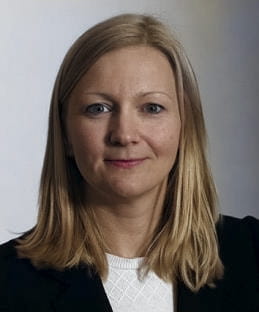ESMA Trading Venue Perimeter EMS under the spotlight Feb
08 February 2023

ESMA has published a final report containing its final Opinion on the trading venue perimeter, providing guidance on when certain systems and facilities qualify as multilateral and therefore should seek authorisation as a trading venue. This follows the publication of a January 2022 consultation paper, containing a draft Opinion, in which ESMA discussed the four elements under MiFID making up a multilateral system, as well as how to treat special cases (e.g. Order Management Systems/Executions Management Systems and Request for Quote Systems, as well as pre-arranged transactions where execution takes place on authorised trading venue).
The final version of the Opinion contains some important changes in relation to Execution Management Systems, and will require some firms to consider their existing arrangements. In particular, ESMA confirms that it is proceeding with the requirement to require written arrangements in relation to pre-arranged transactions that are then formalised on a trading venue.
In April 2021, ESMA published a final report on possible amendments to the definition of an Organised Trading Facility, containing recommendations on making the legal framework in relation to the definition of OTFs and the trading venue perimeter more effective.
The January 2022 consultation paper discussed instances where the trading venue perimeter is not easily identified and might be subject to different interpretations. In the consultation paper, ESMA had also called for a clear distinction to be made between reception and transmission of orders and the operation of a trading venue.
In the final Opinion, four key aspects/criteria need to be met, cumulatively, for an arrangement to be considered as a multilateral system:
a) it is a system or facility; and
b) there are multiple third-party buying and selling interests; and
c) those trading interests are able to interact; and,
d) trading interests need to be in financial instruments.
In the consultation paper, ESMA had argued that substance and not form was important and stated that a system is a set of rules governing how third-party trading interests interact and that these can take the form of contractual agreements or standard procedures. ESMA also adopted a technology-neutral stance (e.g. automated versus non-automated system). It argued that the main point was whether there are specific rules relating to the interaction of multiple market participants to which participants must adhere to. In response to feedback asking for clarity, ESMA confirms the following:
ESMA had noted that so-called Execution Management Systems (EMS) varied in complexity and sophistication. It had argued that an EMS operated by an investment firm, using a proprietary or third party system, whereby a trader inputs the transaction they want to trade in the market into the EMS and then the EMS aggregates the information from trading venues and sends this for execution on the best venue, would not normally be considered as a multilateral system. Where the EMS sends orders for execution directly to specific counterparties instead of trading venues, this might be considered multilateral in nature and hence in scope of trading venue authorisation. The final Opinion confirms the following:
Action for firms: Technology providers to review whether workflows contrite a “system”. Those using EMS should review work flows.
In its consultation, ESMA had discussed the nature of RFQ systems and the definition in RTS 1 and RTS 2, arguing that systems providing for multilateral interaction of trading interests would normally be captured under the definition of a multilateral system, even where the client chooses to request a quote from only one dealer (i.e. a so called RFQ to one) - as this enables the client to send a request to multiple dealers, regardless of whether the client decides to only pick one dealer. Also to be caught were systems allowing clients to send requests to multiple dealers (either at the same time or separately), even if only using a RFQ to one functionality.
Single-dealer platforms allowing different clients to interact with only one counterparty (usually a bank also operating the system and usually dealing on own account) were, according to ESMA, not covered by the definition of RFQ system in RTS 1 and 2.
In the final Opinion, ESMA clarifies that in this case the investment firm is the operator of the system, as it is the investment firm determining the rules governing how the trading interests interact within the system. The final Opinion also states that where an investment firm uses a software vendor (e.g. outsourcing functions of the investment firm's IT capabilities), this type of arrangement would not be in scope of the multilateral system definition, provided the investment firms keeps control of the rules and parameters of how trading interests interact (i.e. it is the investment firm who operates the system).
In order to be considered as bilateral, ESMA had argued that a single-dealer system must not bring together third-party interests and its operator must deal on own account. Where a similar system is operated by a third-party, who only brings together trading interests but does not trade on own account, even where such system only provides a “single-dealer functionality”, it cannot be considered as bilateral. ESMA reiterates recital 7 in MIFID II which states that SIs cannot bring together third party buying and selling interests in the same way as a trading venue.
ESMA had argued that the issue of "multilaterality" depends on the operator of the trading system. Where the system operator is a third-party to the only counterparty, then the system cannot be considered as bilateral. Where the system is operated by the same counterparty, the system should be considered bilateral (and may hence qualify as an SI) and does not require authorisation as a trading venue.
ESMA had argued that systems pre-arranging transactions which are then formalised on a trading venue, even when arranged in a multilateral way, should be viewed in line with ESMA guidance. It suggested that there should be a requirement for an executing trading venue to sign contractual arrangements with pre-arranging systems.
ESMA states that it has listened to concerns about the need to sign a written agreement, but thinks that an appropriate oversight of these pre-arranging systems must be in place. The final Opinion therefore clarifies that a pre-arranging system should be authorised as a MiFID II investment firm and should have an arrangement with the trading venue to ensure appropriate oversight and compliance with the rules for trading venues. The final Opinion provides a non-exhaustive list of how these written agreements can be implemented:
Action for firms: Venues should ensure they have agreements with arrangers or end dealing entities. Arrangers should ensure they have agreements with venues or agreement between the arrangers clients.
The information provided is not intended to be a comprehensive review of all developments in the law and practice, or to cover all aspects of those referred to.
Readers should take legal advice before applying it to specific issues or transactions.





Sign-up to select your areas of interest
Sign-up